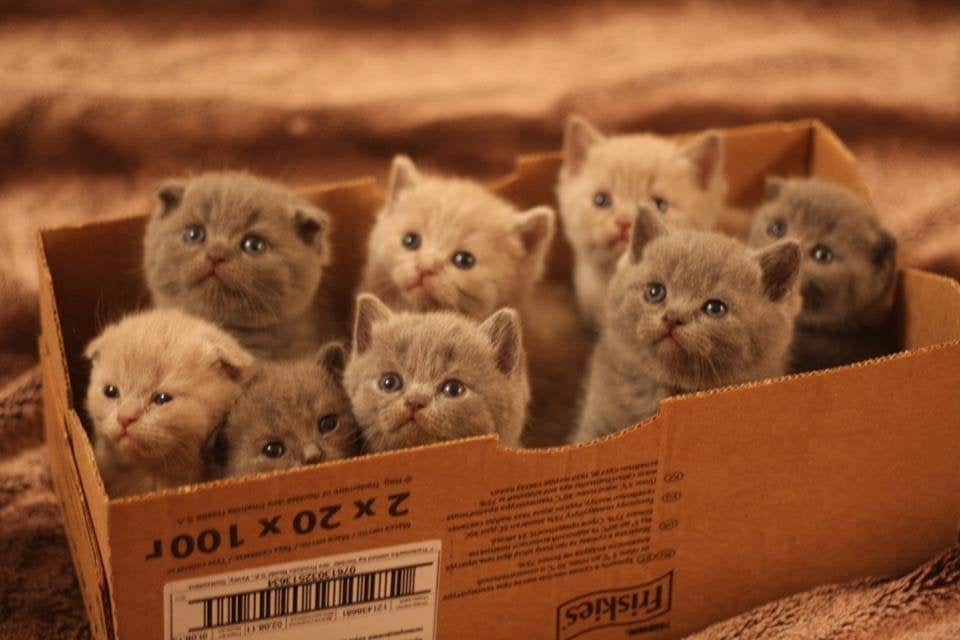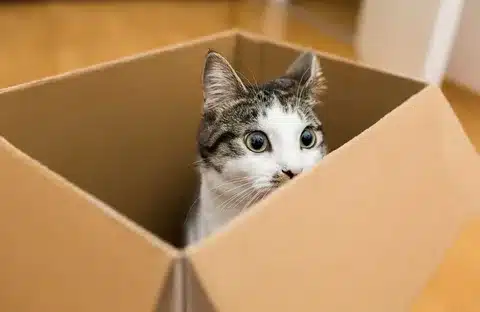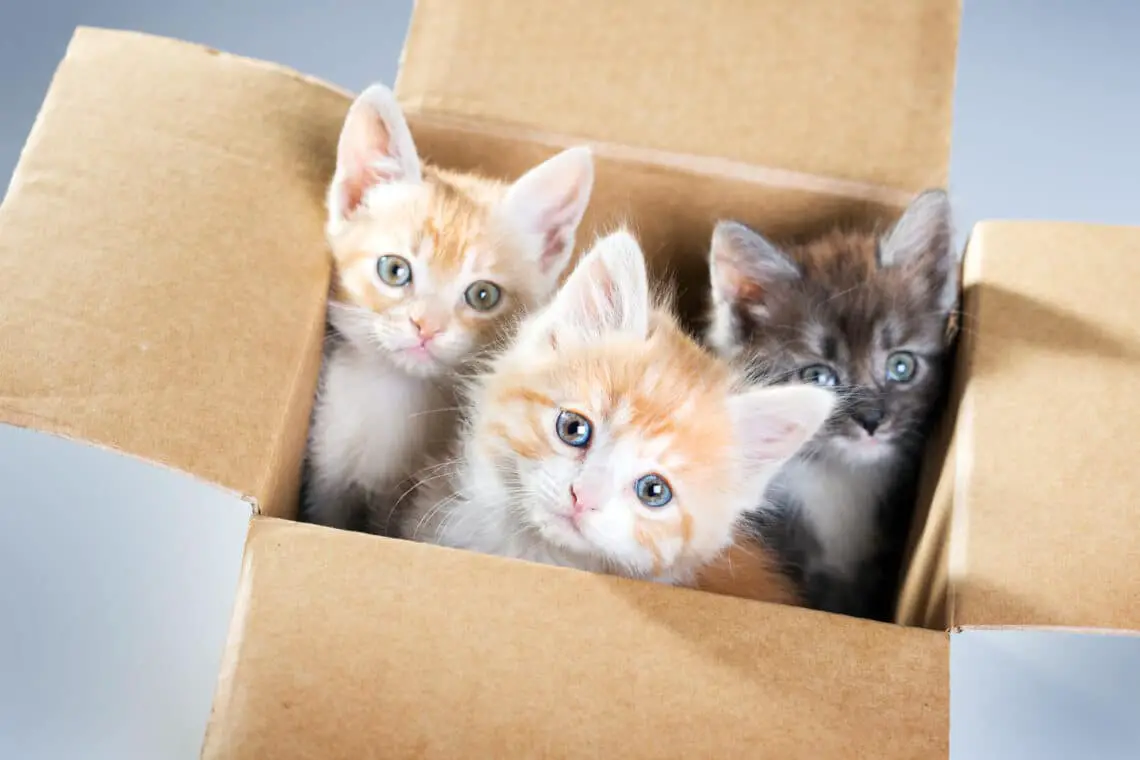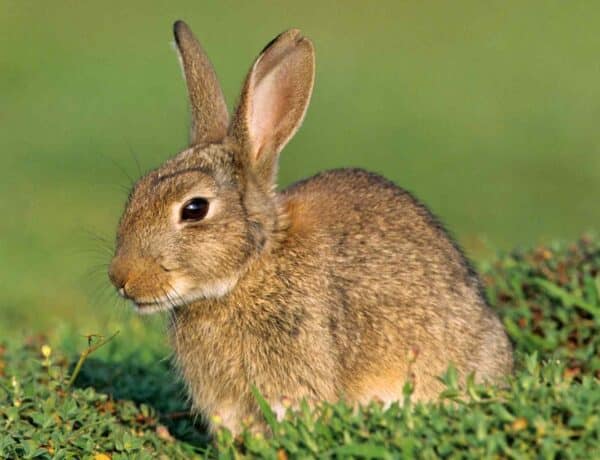Introduction
Are Cats Pack Animals: The enigmatic nature of cats has sparked curiosity and admiration in humans for generations. As our feline companions display a wide array of behaviors, from playful antics to serene solitude, the question of whether cats are inherently pack animals or solitary creatures remains a subject of intrigue and debate. Unlike their close counterparts, dogs, which have a well-established history of living and hunting in packs, cats appear to possess a more complex social structure that has eluded clear classification.
This exploration delves into the captivating world of feline behavior, seeking to unveil the intricate social dynamics that define their lives. By examining their evolutionary heritage, observing their interactions in various settings, and deciphering the impact of genetics and upbringing, we aim to unravel the mystery surrounding the cat cost pack instincts – or lack thereof – in domestic cats.
To comprehend the essence of cats as pack animals, we must journey through their evolutionary timeline, tracing their lineage from solitary wild ancestors to the diverse array of domesticated breeds that grace our homes today. The ecological roles of their predecessors provide valuable insights into whether communal hunting and living were central to the survival of these mysterious creatures. Furthermore, a close examination of feral cat colonies and the dynamics within multi-cat households offers glimpses into the potential complexities of their social interactions.
As we explore the nuances of feline social behavior, the roles of genetics and early experiences come into play. Are cats wired to seek companionship, or does their solitary disposition emerge as a result of individual nature and nurture? Investigating the neurological and hormonal factors that shape their behavior can provide essential clues.
In this inquiry, we navigate a path between the ancient instincts and modern adaptations of our feline friends. By peering into their past and observing their present, we hope to shed light on the question: Are cats truly pack animals, and what does this mean for our understanding of their captivating world? Through a multidimensional approach, combining scientific findings with real-life observations, we embark on a journey to unravel the mysteries surrounding the social nature of cats.

Are cats solitary or pack animals?
Cats are solitary animals and like to be left alone
However, domesticated cats can form very close bonds to people, as well as forming unlikely friendships with other animals such as dogs.
Evolutionary Background: Solitary Origins
To understand feline social behavior, we must first consider the evolutionary origins of domestic cats. Wildcats, the ancestors of our modern feline companions, were solitary hunters. They relied on stealth and individual prowess to secure their prey, favoring a solitary lifestyle. This solitary survival strategy is imprinted in their genetic makeup and continues to influence their behavior today.
The Spectrum of Social Behavior: A Balancing Act
While cats have inherited solitary tendencies, they do not fit the mold of strictly solitary animals like some reptiles or insects. Instead, they exhibit a wide spectrum of social behaviors that adapt to their environment and circumstances. This flexibility allows them to thrive in various settings, from a lone hunter in the wild to a member of a multi-cat household.
Feral Cat Colonies: Community and Cooperation
One fascinating aspect of feline social behavior can be observed in feral cat colonies. These loosely knit groups of cats often share territories and engage in cooperative activities such as grooming, nursing each other’s kittens, and even defending their communal spaces. These behaviors suggest a capacity for forming loose social connections when circumstances allow.
Domestic Dynamics: Multi-Cat Households
In the context of domestic life, multi-cat households provide insight into the intricacies of feline social dynamics. While conflicts can arise over resources like food and territory, cats in such environments also develop complex relationships. Hierarchies form, with some cats assuming dominant roles and others adopting more submissive postures. These dynamics mirror some aspects of pack behavior, albeit in a less structured manner.
Do cats like living in a group?
Although many people think of cats as solitary animals, they are very sociable in the right circumstances. Some indoor cats may prefer living alone, but many get along well in groups. Outdoor cats will form stable groups as long as they can find enough food.
Evolutionary Echoes: Solitary Hunters to Domesticated Dwellers
Understanding cats’ social inclinations necessitates tracing their lineage from their wild ancestors to the domestic companions we know today. Wildcats, solitary hunters by nature, developed survival strategies based on individual prowess. These tendencies remained ingrained as they transitioned from wild hunters to the domesticated felines that share our homes. However, the process of domestication has introduced new factors that influence their social behavior.
Observing Feral Cat Colonies: Insights into Group Dynamics
In examining the question of group living among cats, feral cat colonies offer valuable insights. In these loosely connected groups, cats share territories and engage in cooperative behaviors like communal grooming and caregiving for kittens. These behaviors indicate a capacity for forming social bonds and cooperating when circumstances permit. However, the structure of these colonies differs significantly from the tightly knit packs often associated with other species.
Multi-Cat Households: A Tapestry of Relationships
Multi-cat households provide an intimate setting for observing feline social dynamics. While conflicts can arise over resources and territory, cats in such environments also establish complex relationships. Hierarchies emerge, with some cats taking on dominant roles while others adopt more submissive postures. These relationships, while not necessarily resembling the cohesive unity of a pack, demonstrate that cats are capable of forging intricate connections within a shared space.
How many cats make a pack?
Well… Two cats are just a pair. Three or more cats are a clowder. There are other names used for a group of cats, such as a clutter, a glaring, or a pounce.
Quantifying Feline Cohesion: Unraveling the Concept of a Cat Pack
The notion of a “pack” evokes images of tightly-knit groups of animals like wolves or lions, moving and hunting as a coordinated unit. When it comes to cats, however, the concept of a pack takes on a more intricate and adaptable form. Exploring the question of how many cats make a pack requires us to consider the nuances of feline social dynamics, the influence of context, and the broader definition of companionship among these enigmatic creatures.
Understanding the Pack Dynamic: Beyond Numbers
Unlike species like wolves, which exhibit a clearly defined pack structure, cats possess a more diverse range of social behaviors. Their social interactions exist on a spectrum that spans from solitary living to loosely connected groups. Cats are not bound by specific numerical thresholds to constitute a pack. Instead, their social dynamics are influenced by factors such as genetics, individual personalities, environment, and early socialization.
Feral Cat Colonies: Flexible Communities
Feral cat colonies provide insights into the flexible nature of feline social groups. These colonies consist of loosely connected cats that share territories, resources, and even cooperative behaviors. The number of cats in a colony can vary widely, from a handful to dozens. This variability illustrates that cats can adapt their social interactions to the available resources and circumstances, rather than adhering to a rigid pack size.
Multi-Cat Households: Complex Relationships
In the context of domestic life, multi-cat households reveal the intricate nature of cat relationships. These households can encompass various numbers of cats, and the dynamics within them are characterized by hierarchies, alliances, and individual preferences. Cats in multi-cat environments develop complex relationships that balance both competition and cooperation.
Is a group of cats a pack?
You know about packs of wolves, murders of crows, and colonies of ants. But what is a group of cats called? No, it’s not a pride like lions, but rather a clowder of cats. And while this term might make you picture a bowl of clam chowder, it actually shares origins with other words you know.
Decoding Feline Groups: Exploring the Notion of a Cat Pack
The concept of a “pack” often conjures images of wolves or other social animals, moving in coordinated harmony and united by a common purpose. When applied to cats, the idea of a pack takes on a more nuanced and fluid form. The question of whether a group of cats can be considered a pack delves into the intricacies of feline social behavior, challenging our understanding of collective interactions and shedding light on the unique dynamics that define these enigmatic creatures.
Defining a Pack: Context and Perspective
A pack is typically associated with species that exhibit well-defined hierarchical structures, cooperation in hunting and raising young, and a strong sense of group identity. Cats, however, display a range of social behaviors that don’t neatly fit this definition. While they might not conform to the traditional idea of a pack, they do engage in various forms of social interactions that deserve exploration.
Feral Cat Colonies: An Unconventional Community
Feral cat colonies offer a fascinating glimpse into the complexities of feline social groups. These groups can consist of a few individuals or numerous cats sharing a territory and resources. While not a traditional pack, these colonies exhibit a loose form of social organization, with cats engaging in communal grooming, caregiving, and sharing of spaces. This underscores that while cats might not form a pack in the classic sense, they are capable of forming flexible and cooperative relationships.
Multi-Cat Households: Navigating Relationships
In domestic settings, multi-cat households provide a canvas for understanding how cats interact within a confined space. While not necessarily a pack, these environments reveal the intricacies of cat relationships. Hierarchies can form, with dominant cats claiming resources and territories, while more submissive cats find their niches. These relationships, shaped by individual personalities, genetics, and environmental factors, create a unique social ecosystem.
What is a pack of cats called?
A group of cats is called a clowder.
Unveiling Feline Collectives: Exploring Terminology for Groups of Cats
The English language is rich with collective nouns that capture the essence of animals congregating together, from a “herd” of elephants to a “murder” of crows. However, when it comes to cats, the terminology becomes less defined and often carries a sense of mystery. So, what is a group of cats called? The answer, while not as commonly recognized as those for other animals, offers a glimpse into the unique nature of feline social dynamics.
Linguistic Intricacies: Navigating Feline Terminology
Unlike animals that have established collective nouns, such as a “pride” of lions or a “pod” of dolphins, cats don’t have a universally recognized term to describe a group of their kind. This linguistic gap reflects the complexities of feline behavior, which encompasses a spectrum of social interactions rather than conforming to a single label.
Feral Cat Colonies: A Glimpse into Feline Groups
In the absence of a specific term, we can turn to feral cat colonies for insights into the social gatherings of these enigmatic creatures. These loosely connected groups of feral cats share territories, resources, and, occasionally, cooperative behaviors. While not fitting the mold of a traditional “pack,” these colonies demonstrate the capacity of cats to form affiliations and coexist in close proximity.
Multi-Cat Households: Domestic Feline Sociality
In the realm of domesticity, multi-cat households offer another perspective on feline groups. These settings provide a canvas for observing the complexities of cat relationships. Hierarchies may emerge, with cats assuming varying roles based on their personalities and interactions. This dynamic interplay, while not typically labeled as a pack, highlights the intricate ways cats navigate social dynamics.
Why are cats called kitty?
“young cat, child’s pet name for a cat,” 1719, variant of kitten, perhaps influenced by kitty “girl, young woman” (c. 1500), which originally is a pet form of fem. proper name Catherine.
The Endearing Origins: Unveiling the Enigmatic “Kitty”
“Kitty” – a simple, yet endearing term that has nestled its way into our hearts and vocabulary as a universal descriptor for cats, particularly young ones. But have you ever wondered how this charming moniker came to be? The origins of “kitty” are as fascinating as the creatures themselves, tracing back through history and language to unveil the affectionate nature of human-feline relationships.
Etymology: A Journey through Language
The term “kitty” finds its roots in Middle English, where it was initially used to refer to a young kitten or a young pet animal in general. This Middle English word, “kitten” or “kitoun,” eventually evolved into “kitty.” Interestingly, the word “kitten” itself has a Germanic origin, stemming from the Old English word “citten” or “cyten.”
Cultural Affection: From Pets to Endearment
As domestication brought cats into human homes and hearts, their role shifted from mere pest controllers to cherished companions. Cats became integral members of households, and the term “kitty” naturally extended from being a descriptor of young felines to a term of endearment used to address cats of all ages. The cultural shift reflected the growing affection and familiarity between humans and their feline companions.
Linguistic Evolution: The Power of Diminutives
“Kitty” is an example of a diminutive, a linguistic phenomenon where a word is modified to convey a sense of smallness, affection, or familiarity. Diminutives often evoke warmth and intimacy, making them particularly suitable for addressing beloved pets. The “y” sound in “kitty” adds a soft and friendly touch, aligning perfectly with the image of a delicate and adorable cat.
What is a female cat called?
The term “molly” is a general term for a female cat of any age. Unlike male cats being called either “toms” or “tomcats,” a female cat would only be referred to as a “molly” and not a “molly cat.” This is the term used from the time a kitten is born and can technically be used her whole life.
Regal Associations: The Essence of a “Queen”
The choice of the term “queen” to refer to a female cat is no arbitrary decision. It encapsulates the majestic qualities that cats, particularly females, exude. The term evokes an image of elegance, poise, and sovereignty, reflecting the self-assured and confident nature of female cats.
Historical Symbolism: Cats and Royalty
Throughout history, cats have held a special place in human culture, often associated with reverence and mystique. In ancient civilizations such as ancient Egypt, cats were revered as sacred creatures. They were linked to deities and symbolized protection, fertility, and grace. The connection between cats and royalty extended to their depiction in art, where they were portrayed alongside pharaohs and other esteemed figures. The term “queen” aligns with this historical reverence for cats.
Gender-Specific Terminology: Honoring Feline Identity
The use of the term “queen” for female cats is also part of a broader linguistic tradition of gender-specific animal terminology. Just as male cats are referred to as “tomcats” or “toms,” the term “queen” offers a dignified and fitting counterpart for female cats. This gender distinction honors the unique characteristics and roles that male and female cats play in the feline world.
Linguistic Symbolism: Reflecting Relationships
Beyond its historical and cultural connotations, the term “queen” also reflects the dynamic and often assertive nature of female cats. In the feline social structure, female cats can be formidable and protective when it comes to their territory and offspring. The term “queen” aptly captures their role as matriarchs and caretakers.
Cultural Impact: From Literature to Everyday Language
The term “queen” has transcended its linguistic origins and made its way into popular culture, literature, and everyday language. From literary works that feature feline characters to casual conversations among cat enthusiasts, the term resonates with people who appreciate and admire the complex personalities of female cats.
What is a cat lover called?
Cat lovers are called ailurophiles derived from the Greek word ailouros, which means “cat,” and the suffix -phile, meaning “lover”.
Defining the Term: The Essence of Cat Lover
A cat lover is someone who holds a genuine affection for and fascination with cats. This fondness goes beyond mere appreciation; it encompasses a deep emotional connection and a genuine desire to nurture, care for, and understand feline companions. Cat lovers are often drawn to the unique behaviors, personalities, and charms that cats exhibit.
Shared Experiences: Community of Cat Enthusiasts
The term “cat lover” signifies membership in a diverse and vibrant community that transcends geographical boundaries. Cat lovers come from all walks of life, united by their shared admiration for these mysterious and independent animals. This community extends beyond online forums, social media groups, and local cat clubs, fostering a sense of belonging and camaraderie.
Cat Lover Lifestyle: Embracing Feline Companionship
Cat lovers often integrate their adoration for cats into their daily lives. Their homes become havens for feline companions, adorned with scratching posts, cozy beds, and interactive toys. They engage in conversations about their cats’ antics, celebrate their birthdays, and document their charming quirks through photos and anecdotes.
Advocates and Protectors: The Heart of Cat Lovers
Cat lovers are not just passive admirers; many also advocate for the welfare and rights of cats. They champion causes related to feline health, responsible ownership, and animal welfare. Whether through supporting animal shelters, participating in trap-neuter-return programs for feral cats, or promoting adoption, cat lovers actively work to improve the lives of these animals.
Cultural Impact: Cat Lovers in Art and Media
The influence of cat lovers extends beyond their personal interactions with cats. The relationship between humans and cats has been depicted in art, literature, and media for centuries. From famous cat characters in literature to viral cat videos online, the adoration of cats is a cultural phenomenon that resonates with people worldwide.

Conclusion
The intricate puzzle of whether cats are pack animals or solitary creatures is one that continues to captivate the minds of researchers, animal enthusiasts, and pet owners alike. Our exploration into the world of feline social dynamics reveals a complex tapestry of behaviors and instincts that defy a simple classification.
Through the lens of evolution, we’ve traced the lineage of domestic cats back to their wild ancestors, drawing connections between their solitary survival strategies and the diverse range of behaviors we observe in today’s domesticated feline companions. The influence of genetics has become evident in the variations in social tendencies among different breeds, shedding light on the nuanced interplay between inherent disposition and environmental factors.
Our investigation into communal living, whether in the form of feral cat colonies or multi-cat households, underscores the adaptability of cats to various social structures. While they might not exhibit the cohesive pack behavior of canines, cats are not bound to a purely solitary existence either. Instead, they seem to operate on a spectrum of social interactions, where cooperation and camaraderie intertwine with territorial instincts and independent pursuits.
In the modern context, the concept of “pack” for cats might extend beyond a strictly defined group to encompass a network of individuals with varying degrees of affiliation. This recognition challenges us to respect their diverse social needs and personalities while enriching their lives with environments that accommodate both communal interactions and private respites.
Ultimately, the question of whether cats pack animals transcends a simple yes-or-no answer. Rather, it invites us to appreciate the complexity of feline behavior and the unique ways in which these enigmatic creatures navigate their world. As we continue to unravel the mysteries of their social dynamics, our understanding of cats as companions, survivors, and cohabitants of our shared spaces deepens, enhancing the bonds we forge with these captivating beings.



1 Comment
Richelle Z
July 13, 2024 at 1:35 amVery interesting subject, thank you for posting.Leadership